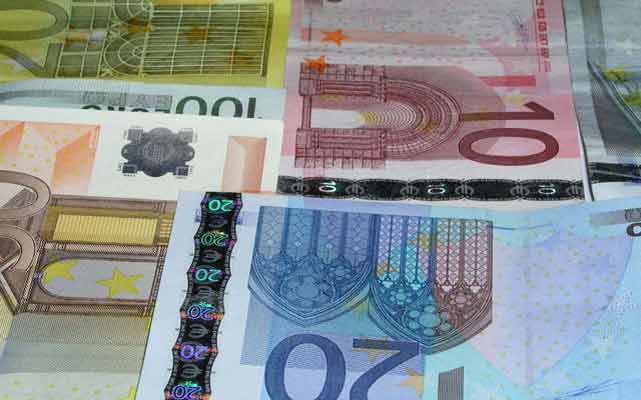Pound to Euro Forecasts for 2025: 8-Year Best Ahead for GBP/EUR
December 30, 2024 - Written by David Woodsmith

The Pound to Euro exchange rate (GBP/EUR) hit a 33-month best around 1.2150 in 2024 as a notable shift in yields boosted Sterling.
After a limited correction, a key element in 2025 will be whether GBP/EUR can break above 1.2200, levels last seen before the 2026 Brexit referendum.
Goldman Sachs remains positive on Pound fundamentals and forecasts that GBP/EUR will strengthen to 1.2660 by the end of 2025.
RBC Capital Markets, however, expects early Pound strength will fade with GBP/EUR retreating to 1.1765 at year-end.
ING sees positive Pound fundamentals; “EUR/GBP is closing in on the 0.8200 low seen in 2022. Below there, we will all be discussing this pair returning to levels last seen on the day of the Brexit vote in 2016.
It added; “We think this trend is primarily being driven by the BoE versus ECB story. But warmer relations between the UK and the EU can’t hurt. Equally, the eurozone’s fiscal straitjacket should mean the UK economy does outperform in 2025.”
The bank does, however, see important risks from BoE policy; “The reason we are not more bearish EUR/GBP in our forecasts is that we think the BoE will crumble around February and open up to a more aggressive easing cycle.”

Many investment banks expect that the Pound will perform strongly early in the year, but face increased difficulties and potentially be more vulnerable later in the year.
Danske Bank commented; “GBP continues to benefit from a hawkish BoE, inflation and wage growth remaining elevated and underlying growth in the UK outperforming the Eurozone. We think these forces will continue to weigh on the cross also in the coming quarters.”
It did, however, add; “Longer-term some of these GBP tailwinds look set to fade and we expect not least a more dovish BoE to eventually weigh on GBP.”
It expects GBP/EUR will end 2025 just below 1.2200.
Monetary policy will remain a key focus during the year.
The Bank of England (BoE) cut interest rates only twice during 2024 amid persistent uncertainty surrounding inflation trends.
In contrast, the ECB cut interest rates four times amid a sharp decline in inflation and weak growth.

This shift in yields was crucial in supporting the Pound.
At this stage, markets are pricing in only two BoE interest rate cuts for 2025, but most investment banks expect a more dovish stance.
In December, there was a 6-3 vote to hold rates at 4.75% and ING expects a notable shift in the first quarter; “The apparent growing dovish front within the MPC in spite of the latest hawkish wage data potentially suggests a greater focus on slowing activity. That reinforces our dovish view on the Bank of England for next year – we expect 150bp of cuts, against market expectations for around 55bp.”
Ruth Gregory, deputy chief UK economist at Capital Economics commented; “The weakness of economic activity appears to be weighing increasingly on MPC members’ minds. The three MPC members who voted in December for a rate cut expressed concern that sluggish demand created a risk of inflation falling too far below the 2 per cent target in the medium term.”
According to Gregory; “As a result, we think the markets have gone too far in pricing in only a 45 per cent chance of a rate cut in February and then just two further 25 basis point rate cuts next year.”
ING expects six BoE rate cuts during 2025.
Barclays expects monetary policy trends will still be positive for the Pound; “we expect the BoE to take a more cautious approach to easing—which has been well telegraphed in recent BoE communication. In contrast, on the European mainland, the focus has shifted more decisively from inflation concerns to growth challenges, indicating a greater likelihood of further easing measures. This should eventually put pressure on EURGBP.”
RBC Capital Markets (RBC) also sees a firm near-term Pound tone; “Given the UK’s yield and its lower relative vulnerability to potential tariffs, we think the path of least resistance is the downtrend in EUR/GBP extending a bit further in the near-term.”
The bank does, however, remain cautious over the longer-term outlook; “the market’s short EUR/GBP positioning and any signs of weakness in economic data bear watching.”
RBC added; “Over the longer-run the bank considers that a lot of bad news has been priced in to the Euro while the Pound is overvalued. The hurdle is low for GBP weakness if there are any concerns about UK’s growth outlook or fiscal dynamics, and/or there is a risk-off shock. This will leave the currency vulnerable, especially if there is a slide in risk appetite.
Fiscal policy will continue to be important during the year.
The UK government announced a strong increase in spending for fiscal 2025/26, but also raised taxes with an increase in employer National Insurance Contributions the main focus.
There has been evidence that tax hikes have damaged confidence and the economy stagnated over the second half of 2024, but government spending will increase strongly.
Goldman expressed some reservations over the economic outlook; “While Sterling has traded well through the mix of data recently, going forward, a further capitulation in growth momentum stands as a key risk to our view that the Pound can be a regional European outperformer.”
Goldman is, however, still bullish on the Pound; “Broader global factors will be more important than any of this for Sterling, in our view. Namely, the Pound’s procyclical characteristics and its lower vulnerability to tariff risks and trade uncertainty should both support the currency over time, and these serve as the key underpinnings to our continued constructive view on the Pound.”
The ECB has cut the deposit rate to 3.00% and markets expect further cuts in 2025.
Nordea expects that rates will be cut to 2.25%, but added; “Risks remain tilted to the downside to our forecast. If continued political risks, geopolitical tensions and further weakness in the manufacturing sector start to depress the labour market and lead to worries of inflation undershooting the ECB’s 2% target, rates would most likely be returned to accommodative scenario. In this kind of a scenario, rate cuts could easily continue to somewhere around 1 – 1.5%.”
Aggressive rate cuts would undermine the Euro initially, but could underpin growth later in 2025.
Politically, German Chancellor Scholz lost a vote of confidence in December and there will be fresh elections on February 23rd.
The opposition CDU are poised to be the largest party, but strong vote for the right-wing AfD would complicate the process in securing a coalition government.
French Prime Minister Barnier also resigned late in 2024 after failing to get the budget approved and the three-way split in parliament will make it very difficult to achieve a stable government.
New elections can only be called from July and there is a risk that deadlock will persist.
ING commented; “the eurozone’s fiscal straitjacket should mean the UK economy does outperform in 2025.”
Markets are also braced for a more aggressive trade policy from the new US Trump Administration with the risks that tariffs will be imposed on Europe.
According to Barclays; “the Eurozone, with its greater reliance on goods trade, appears more exposed than the UK. That said, the UK would likely not emerge unscathed from a trade war, as it remains a highly open and trade-reliant economy.”
STORY LINK Pound to Euro Forecasts for 2025: 8-Year Best Ahead for GBP/EUR

The Pound to Euro exchange rate (GBP/EUR) hit a 33-month best around 1.2150 in 2024 as a notable shift in yields boosted Sterling.
After a limited correction, a key element in 2025 will be whether GBP/EUR can break above 1.2200, levels last seen before the 2026 Brexit referendum.
Goldman Sachs remains positive on Pound fundamentals and forecasts that GBP/EUR will strengthen to 1.2660 by the end of 2025.
RBC Capital Markets, however, expects early Pound strength will fade with GBP/EUR retreating to 1.1765 at year-end.
ING sees positive Pound fundamentals; “EUR/GBP is closing in on the 0.8200 low seen in 2022. Below there, we will all be discussing this pair returning to levels last seen on the day of the Brexit vote in 2016.
It added; “We think this trend is primarily being driven by the BoE versus ECB story. But warmer relations between the UK and the EU can’t hurt. Equally, the eurozone’s fiscal straitjacket should mean the UK economy does outperform in 2025.”
The bank does, however, see important risks from BoE policy; “The reason we are not more bearish EUR/GBP in our forecasts is that we think the BoE will crumble around February and open up to a more aggressive easing cycle.”

Many investment banks expect that the Pound will perform strongly early in the year, but face increased difficulties and potentially be more vulnerable later in the year.
Danske Bank commented; “GBP continues to benefit from a hawkish BoE, inflation and wage growth remaining elevated and underlying growth in the UK outperforming the Eurozone. We think these forces will continue to weigh on the cross also in the coming quarters.”
It did, however, add; “Longer-term some of these GBP tailwinds look set to fade and we expect not least a more dovish BoE to eventually weigh on GBP.”
It expects GBP/EUR will end 2025 just below 1.2200.
Monetary policy will remain a key focus during the year.
The Bank of England (BoE) cut interest rates only twice during 2024 amid persistent uncertainty surrounding inflation trends.
In contrast, the ECB cut interest rates four times amid a sharp decline in inflation and weak growth.

This shift in yields was crucial in supporting the Pound.
At this stage, markets are pricing in only two BoE interest rate cuts for 2025, but most investment banks expect a more dovish stance.
In December, there was a 6-3 vote to hold rates at 4.75% and ING expects a notable shift in the first quarter; “The apparent growing dovish front within the MPC in spite of the latest hawkish wage data potentially suggests a greater focus on slowing activity. That reinforces our dovish view on the Bank of England for next year – we expect 150bp of cuts, against market expectations for around 55bp.”
Ruth Gregory, deputy chief UK economist at Capital Economics commented; “The weakness of economic activity appears to be weighing increasingly on MPC members’ minds. The three MPC members who voted in December for a rate cut expressed concern that sluggish demand created a risk of inflation falling too far below the 2 per cent target in the medium term.”
According to Gregory; “As a result, we think the markets have gone too far in pricing in only a 45 per cent chance of a rate cut in February and then just two further 25 basis point rate cuts next year.”
ING expects six BoE rate cuts during 2025.
Barclays expects monetary policy trends will still be positive for the Pound; “we expect the BoE to take a more cautious approach to easing—which has been well telegraphed in recent BoE communication. In contrast, on the European mainland, the focus has shifted more decisively from inflation concerns to growth challenges, indicating a greater likelihood of further easing measures. This should eventually put pressure on EURGBP.”
RBC Capital Markets (RBC) also sees a firm near-term Pound tone; “Given the UK’s yield and its lower relative vulnerability to potential tariffs, we think the path of least resistance is the downtrend in EUR/GBP extending a bit further in the near-term.”
The bank does, however, remain cautious over the longer-term outlook; “the market’s short EUR/GBP positioning and any signs of weakness in economic data bear watching.”
RBC added; “Over the longer-run the bank considers that a lot of bad news has been priced in to the Euro while the Pound is overvalued. The hurdle is low for GBP weakness if there are any concerns about UK’s growth outlook or fiscal dynamics, and/or there is a risk-off shock. This will leave the currency vulnerable, especially if there is a slide in risk appetite.
Fiscal policy will continue to be important during the year.
The UK government announced a strong increase in spending for fiscal 2025/26, but also raised taxes with an increase in employer National Insurance Contributions the main focus.
There has been evidence that tax hikes have damaged confidence and the economy stagnated over the second half of 2024, but government spending will increase strongly.
Goldman expressed some reservations over the economic outlook; “While Sterling has traded well through the mix of data recently, going forward, a further capitulation in growth momentum stands as a key risk to our view that the Pound can be a regional European outperformer.”
Goldman is, however, still bullish on the Pound; “Broader global factors will be more important than any of this for Sterling, in our view. Namely, the Pound’s procyclical characteristics and its lower vulnerability to tariff risks and trade uncertainty should both support the currency over time, and these serve as the key underpinnings to our continued constructive view on the Pound.”
The ECB has cut the deposit rate to 3.00% and markets expect further cuts in 2025.
Nordea expects that rates will be cut to 2.25%, but added; “Risks remain tilted to the downside to our forecast. If continued political risks, geopolitical tensions and further weakness in the manufacturing sector start to depress the labour market and lead to worries of inflation undershooting the ECB’s 2% target, rates would most likely be returned to accommodative scenario. In this kind of a scenario, rate cuts could easily continue to somewhere around 1 – 1.5%.”
Aggressive rate cuts would undermine the Euro initially, but could underpin growth later in 2025.
Politically, German Chancellor Scholz lost a vote of confidence in December and there will be fresh elections on February 23rd.
The opposition CDU are poised to be the largest party, but strong vote for the right-wing AfD would complicate the process in securing a coalition government.
French Prime Minister Barnier also resigned late in 2024 after failing to get the budget approved and the three-way split in parliament will make it very difficult to achieve a stable government.
New elections can only be called from July and there is a risk that deadlock will persist.
ING commented; “the eurozone’s fiscal straitjacket should mean the UK economy does outperform in 2025.”
Markets are also braced for a more aggressive trade policy from the new US Trump Administration with the risks that tariffs will be imposed on Europe.
According to Barclays; “the Eurozone, with its greater reliance on goods trade, appears more exposed than the UK. That said, the UK would likely not emerge unscathed from a trade war, as it remains a highly open and trade-reliant economy.”
International Money Transfer? Ask our resident FX expert a money transfer question or try John's new, free, no-obligation personal service! ,where he helps every step of the way, ensuring you get the best exchange rates on your currency requirements.
Comments are currrently disabled
Related Stories:
- Euro to Dollar Forecast: Further EUR Upside to Upper 1.16s? - April 20, 2025
- Pound to Dollar Forecast: GBPUSD Bullish to 1.34 for Buyers - April 20, 2025
- Pound to Euro Week Ahead Forecast: Further Gains to 1.17 Before Sterling Slide - April 20, 2025
- Pound Sterling to Euro Forecast: ECB Upside, "EUR Looking Overvalued vs USD, GBP, JPY" - April 17, 2025
- Pound to Dollar Forecast: Scope for GBP/USD Gains to 1.3290 say UoB - April 16, 2025
- Euro to Dollar Forecast: EUR Dip Buying, as "Deterioration of US Data Likely" - April 15, 2025
- Pound to Euro Forecast: GBP Bounces, Buy vs EUR Below 1.1450 say ING - April 14, 2025
- Euro to Dollar Forecasts HIKED to 1.20 at MUFG Over Twelve Month Timeline - April 14, 2025
- Pound to Euro Week Ahead Forecast: Short-Term Buy, 1.19 by Q3 2025 - April 13, 2025
Latest News:
- Pound to Dollar Forecast: GBP, EUR Surge as USD Crashes on Trump-FED Spat - April 22, 2025
- Euro to Dollar Forecast: Further EUR Upside to Upper 1.16s? - April 20, 2025
- Pound to Dollar Forecast: GBPUSD Bullish to 1.34 for Buyers - April 20, 2025
- Pound to Euro Week Ahead Forecast: Further Gains to 1.17 Before Sterling Slide - April 20, 2025
- Euro to Dollar Rate Resilient Despite ECB Rate Cut, USD Confidence Depressed - April 17, 2025
- Pound Sterling to Euro Forecast: ECB Upside, "EUR Looking Overvalued vs USD, GBP, JPY" - April 17, 2025
- GBP/USD Forecast: Pound Looks to be Overbought Against Dollar - April 17, 2025
- Pound-to-Euro Rate Slips as UK Inflation Misses Forecasts - April 17, 2025
- Pound to Dollar LIVE: 7th Consecutive Daily GBP Gain, "Momentum Remains Bullish" - April 16, 2025
- Pound to Euro Forecast: "GBP to Underperform EUR as Dollar Weakens" - April 16, 2025








